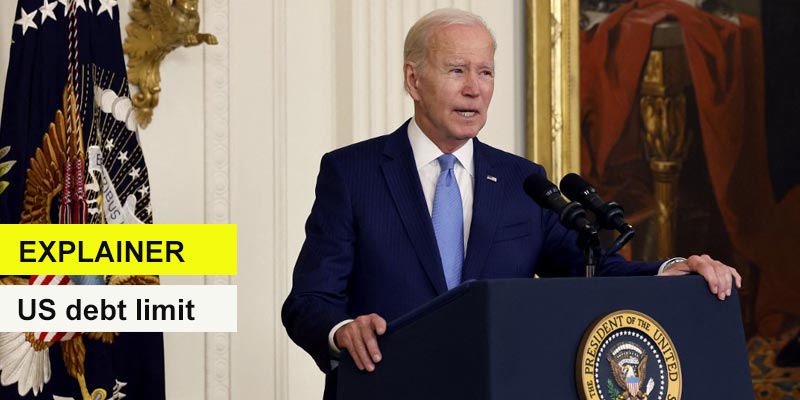- World
- May 19
Explainer - US debt-ceiling crisis
• US Treasury Secretary Janet Yellen said in a letter to Congress that the country could default on its debt as early as June 1, if legislators do not raise or suspend the nation’s borrowing authority before then, and avert what could potentially become a global financial crisis.
• US President Joe Biden has postponed his trip to Australia for the Quad summit due to debt ceiling negotiations in Washington.
• The US President and House Speaker Kevin McCarthy are trying to strike a budget deal before the US Treasury runs out of cash to keep paying the nation’s bills.
• New analyses by both the Congressional Budget Office and the US Department of the Treasury suggest the US is rapidly approaching the date at which the government can no longer pay its bills, also known as the “X-date”.
• Republicans, who control the House by a 222-213 majority, have refused to vote to lift the debt ceiling past its $31.4 trillion limit unless Biden and his Democrats agree to spending cuts in the federal budget.
• An agreement needs to be reached and passed by both chambers of Congress before the federal government runs out of money to pay its bills.
• There is no historical precedent for the US government passing the X-date and breaching its debt ceiling without Congress raising or suspending the statutory limit on federal debt.
• History is clear that even getting close to a breach of the US debt ceiling could cause significant disruptions to financial markets that would damage the economic conditions faced by households and businesses.
What is debt limit?
• The debt limit is the total amount of money that the US government is authorised to borrow to meet its existing legal obligations, including social security and Medicare benefits, military salaries, interest on the national debt, tax refunds, and other payments.
• The debt limit is a nearly century-old artificial cap that Congress placed on the US government’s ability to borrow. Lawmakers have raised or suspended it nearly 80 times since 1960.
• The debt ceiling is imposed by Congress on the amount of debt that the US Federal government can have outstanding.
• In January 2023, the total national debt and the debt ceiling both stood at $31.4 trillion.
• The limit needs to be lifted regularly because the government spends more than it takes in taxes.
• Congress has always acted when called upon to raise the debt limit. Since 1960, Congress has acted 78 separate times to permanently raise, temporarily extend, or revise the definition of the debt limit – 49 times under Republican presidents and 29 times under Democratic presidents.
• The debt limit does not authorise new spending commitments. It simply allows the government to finance existing legal obligations that Congresses and presidents of both parties have made in the past.
What happens when the US govt hits the debt limit?
• Failing to increase the debt limit would have catastrophic economic consequences. It would cause the government to default on its legal obligations – an unprecedented event in American history.
• That would precipitate another financial crisis and threaten the jobs and savings of everyday Americans – putting the United States right back in a deep economic hole, just as the country is recovering from the recent recession.
• If the US government were to default on its obligations — whether to creditors, contractors, or citizens — the economy would quickly shift into reverse, with the depth of the losses a function of how long the breach lasted.
• A protracted default would likely lead to severe damage to the economy, with job growth swinging from its current pace of robust gains to losses numbering in the millions.
Manorama Yearbook app is now available on Google Play Store and iOS App Store

